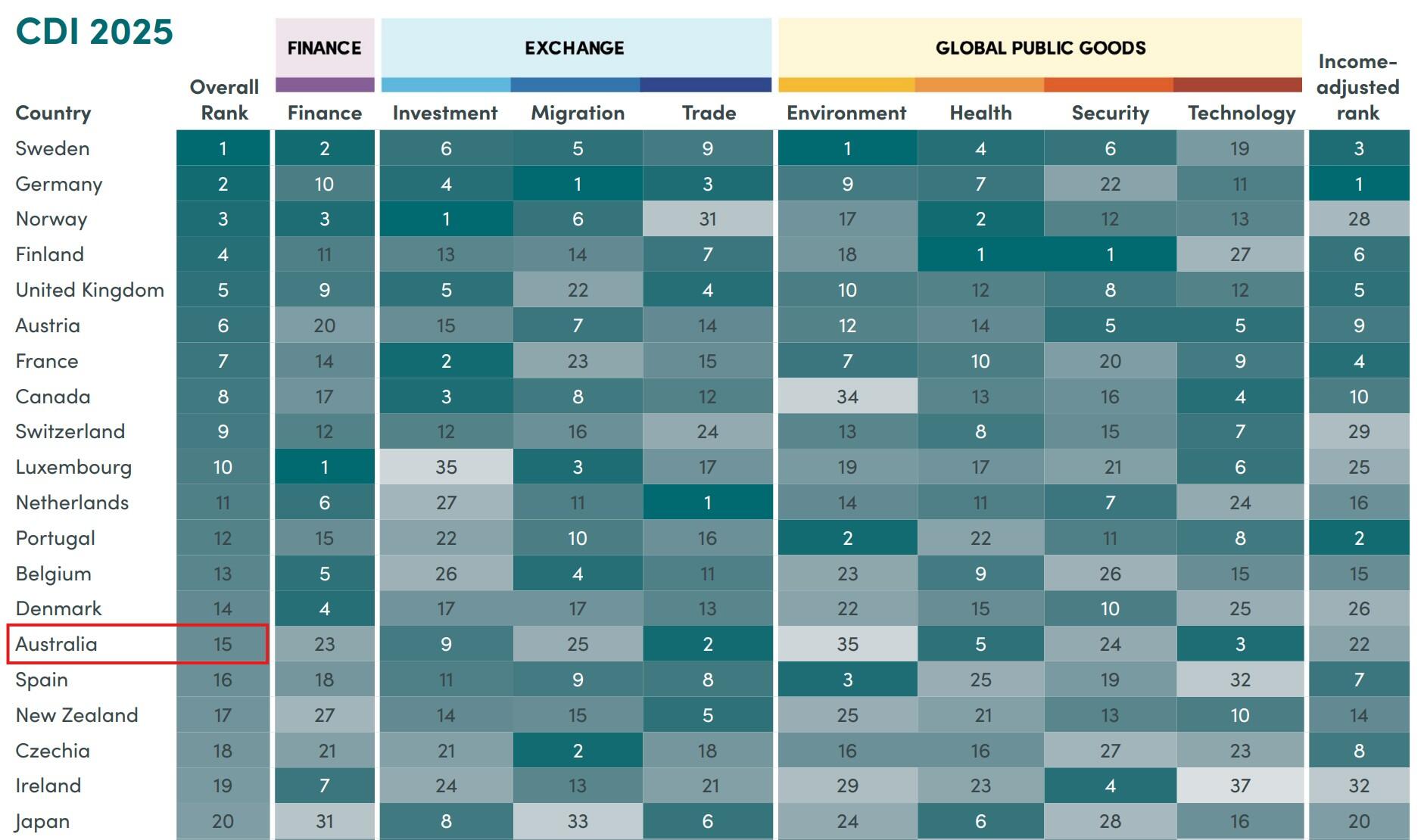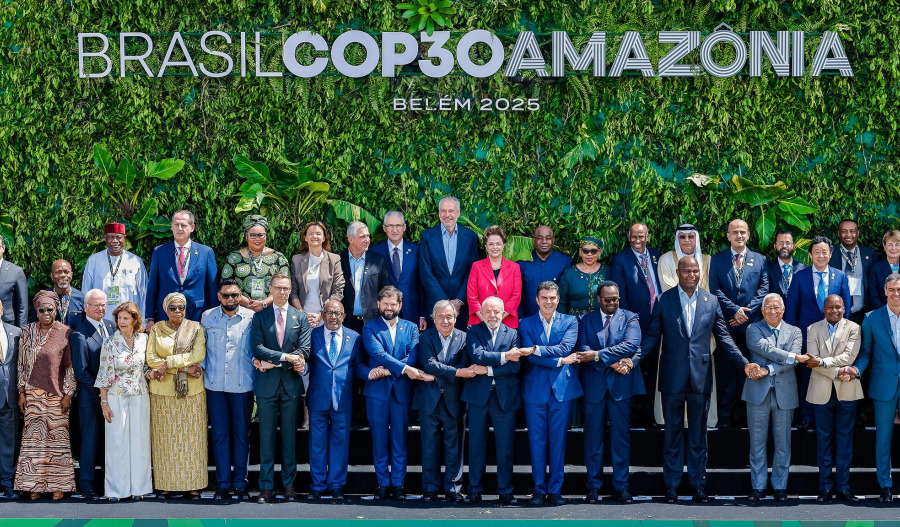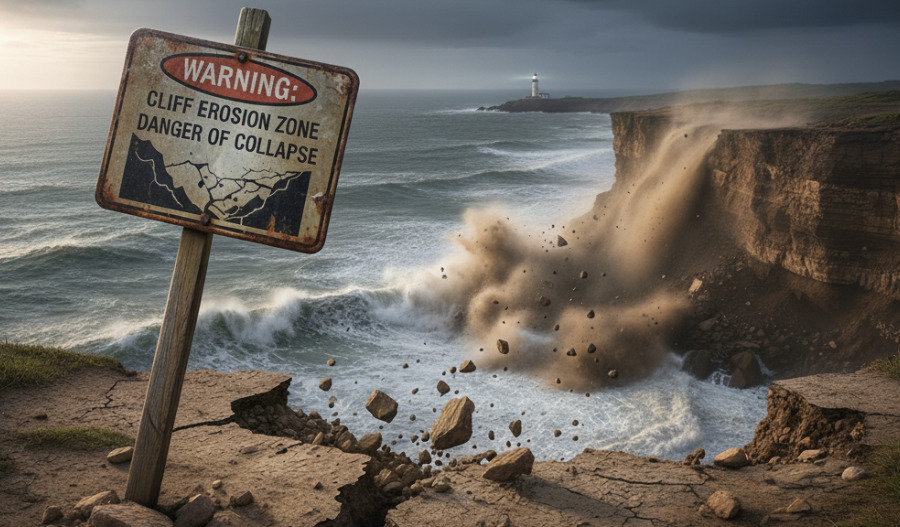With development finance plummeting across wealthy nations, a new ranking exposes which countries actually deliver for the world's poorest - and which are letting geopolitics trump progress.
Sweden has claimed top spot in the 2025 Commitment to Development Index, maintaining its position as the world's most development-focused economy - despite a shrinking lead over rivals.
The Center for Global Development's latest analysis ranks 38 major economies across eight policy areas that affect global poverty, from trade and migration to climate action and technology transfer.

Germany finished second overall and leads among G7 nations, driven by the highest per-capita acceptance of migrants and refugees among measured countries.
The country allocated €1.066 billion to integration courses in 2025 - a €302.8 million increase from initial plans - after accepting more than 34,800 Afghan refugees through special admission programs since 2021.
Norway rounded out the top three with strong development finance and investment policies, though high agricultural subsidies and fossil fuel production dragged its score down.
The findings arrive as four of the world's largest aid providers - the U.S., UK, France and Germany - have announced steep budget cuts.
While these reductions haven't fully appeared in the data yet, earlier cuts are already evident.
Sweden's parliament set the ODA budget at SEK56 billion (US$5.3 billion) for 2025, representing 0.88% of projected GNI, down from the historic 1% commitment.
The country announced further reductions from SEK56 billion to SEK53 billion annually between 2026-2028, marking a shift in its long-standing development leadership.
Development finance relative to economic size fell across most measured nations, with non-OECD providers cutting fastest.
China slashed its development spending by almost a quarter relative to GDP since 2023, while Indonesia cut by more than half and South Africa reduced its contribution by over 80%.
Migration flows increased 70% per capita across CDI countries between 2020 and 2022, largely driven by Ukrainian refugees.
Germany's new coalition government has since reversed course, with Interior Minister Alexander Dobrindt announcing in May 2025 that border police would turn away undocumented immigrants, rescinding a 2015 instruction that allowed entry.
The country suspended UN refugee resettlement programs in April 2025 as political pressure mounted from the far-right Alternative for Germany party.
Three-quarters of nations reduced per-capita emissions between 2019 and 2023, though China's increases alone negated all other countries' combined reductions.
The world's largest emitter experienced emissions increases of approximately 565 million tonnes in 2023, pushing its per capita emissions 15% higher than those in advanced economies, according to the International Energy Agency.
Fossil fuel subsidies
G20 governments provided a staggering US$1.4 trillion in support for fossil fuels in 2022, including US$1 trillion in subsidies, US$322 billion in state-owned enterprise investments, and US$50 billion in lending from public financial institutions - more than double pre-pandemic levels.
Gas subsidies more than tripled as governments responded to Russia's invasion of Ukraine and supply disruptions.
"We have seen that the average subsidy for gas production across CDI countries more than tripled, even more so across the EU," the report stated.
“Subsidies for oil also increased in over half of countries, but to a far smaller degree than for gas: the greatest absolute increases in oil subsidies were in Japan (an almost 14-fold increase) and Mexico.”
Germany, France and Italy alone provided US$213 billion in fossil fuel crisis support in 2022.
Poland and China saw coal subsidies surge almost 4X and 5X, respectively, even as most countries attempted to reduce their dirtiest energy sources.
Agricultural subsidies fell in 28 countries, creating a more level playing field for developing nations where farming dominates GDP.
EU members, Switzerland and Norway still maintain high support levels, with Norwegian subsidies exceeding 56% of total farm production - a massive distortion that makes it nearly impossible for poorer nations to compete.
Research spending
CDI countries collectively spend 0.58% of GDP on R&D - almost three times their 0.2% spent on development finance.
That ratio has held steady while aid budgets face the axe, suggesting where governments' real priorities lie.
Researchers from BRICS+ nations collaborate more frequently with lower-income countries than their Western counterparts.
South African academics partner with researchers from countries with an average US$16,900 per capita income - seven times the low-income threshold.
Austrian researchers' average partners come from countries with US$38,500 per capita income - sixteen times that threshold, highlighting a stark divide in scientific cooperation patterns.
Quality gap
Bilateral aid increasingly flows to middle-income nations rather than the poorest countries where it can have the greatest impact, says the study.
The average recipient income rose from 1.8X to 2.2X the low-income country threshold between 2018 and 2024, partly reflecting Ukraine's substantial needs but also indicating a worrying drift away from poverty-focused aid.
Luxembourg and Ireland jumped four places each in the rankings, with Luxembourg now tenth overall after increasing already-generous development finance.
Austria and Chile each climbed three spots, while the Netherlands dropped five places to eleventh.
Israel and Russia were excluded from the 2025 index due to active major conflicts that the CDI cannot meaningfully quantify or compare, though spillover effects from Russia's invasion appear in other nations' scores.



